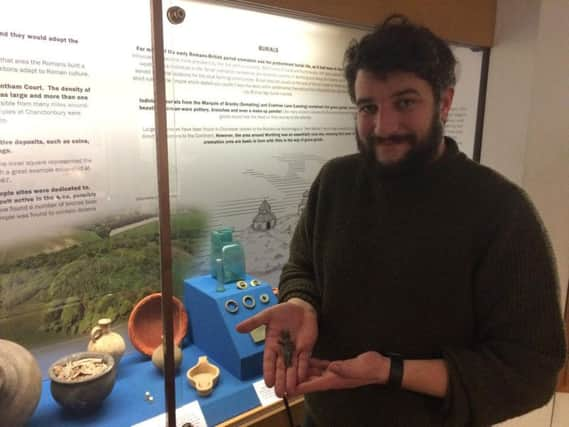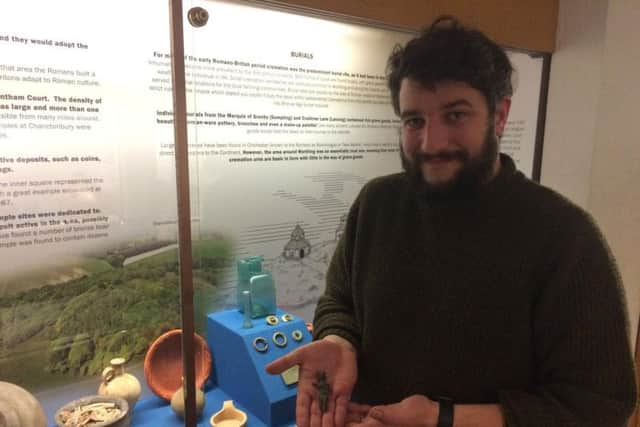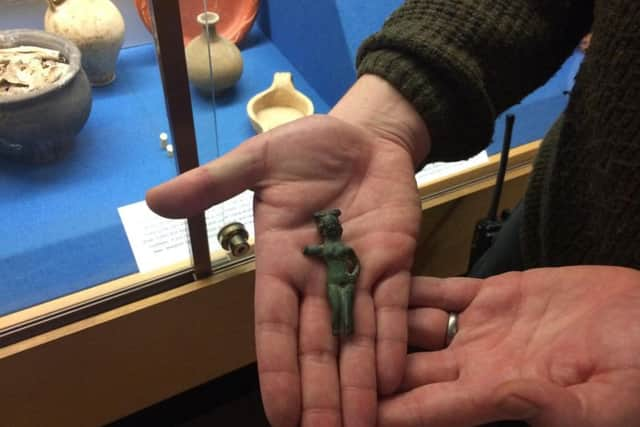Roman statuette discovered in resident's garden is one of Worthing Museum's '˜best finds'


The finger-length figurine, believed to be almost 2,000 years old, was handed in to the museum in Chapel Road by Worthing resident Albert Neal in December.
It was discovered by his brother in a flower bed while his mother was gardening at their home in Mardale Road, Salvington, in the 1960s.
Advertisement
Hide AdAdvertisement
Hide AdJames Sainsbury, archaeological curator at the museum, said: “It’s a lovely little statue.


“It’s one of the best things we’ve taken in. It’s so tangible and considering how old it is – it’s lost its legs and right arm – you still can make out features.”
He said it was an ‘unusual’ find for the area and one of only two Roman figures ever discovered in Worthing.
“Statues like this were relatively common but not really in Britain,” he said.
Advertisement
Hide AdAdvertisement
Hide AdWhile there were 'extensive' Roman settlements in Worthing and the whole of the coastal plain, which was ‘relatively densely populated’, the area was made up of little farmsteads rather than major towns, he said.


However it was likely that the statuette would have belonged to someone well off, rather than a peasant, Mr Sainsbury believed.
“The average peasant wouldn’t have one,” he said. “There’s something going on for this to be found, it wouldn’t have been dropped accidentally.”
Archaeologists can tell the figure is Venus from the pose, the nudity and the hairstyle, Mr Sainsbury said, adding: “She was very important, she was a state-sponsored god and had temples for her built by the government.”
Advertisement
Hide AdAdvertisement
Hide AdThe statuette has a groove in the head, which Mr Sainsbury said was not common, and suggests it could have been attached to a plate or to a belt.
After the exciting find, Mr Sainsbury said all residents should look out for artifacts in the area.
“People should keep an eye out in their gardens, for everything from flint tools to musket balls,” he said.
“It’s everywhere around this area. I found an 8,000 year old flint blade in my garden.
Advertisement
Hide AdAdvertisement
Hide Ad“I’m very happy for people to come in with whatever they’ve found, I love in when people bring stuff in.”